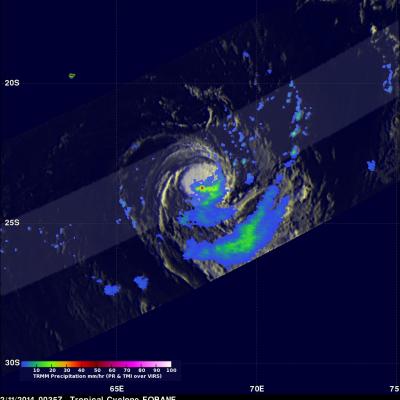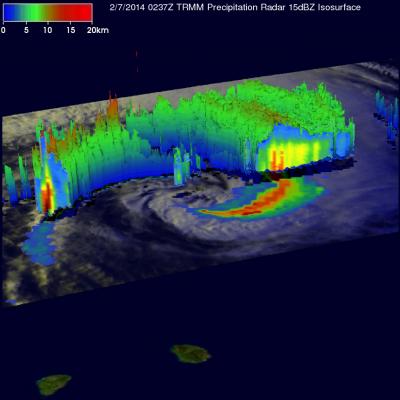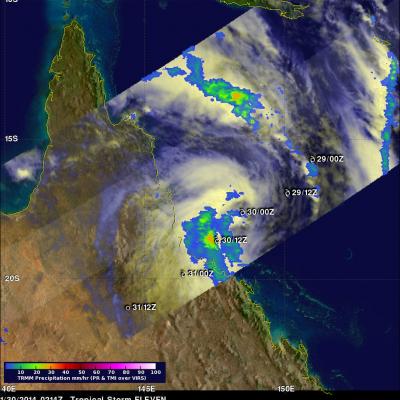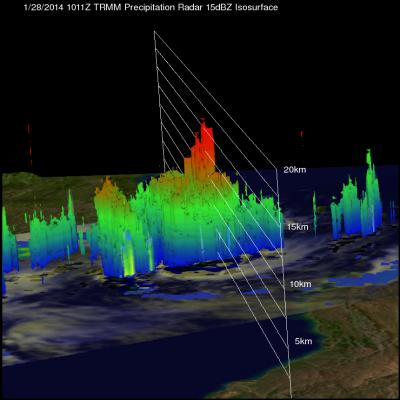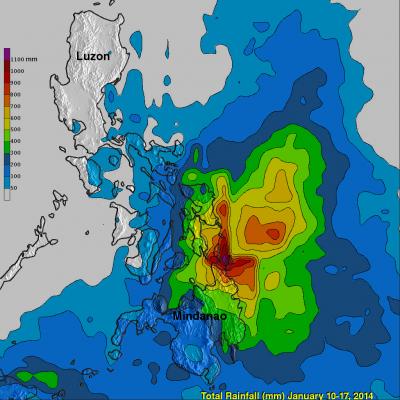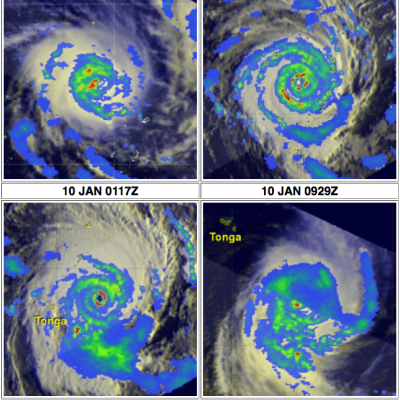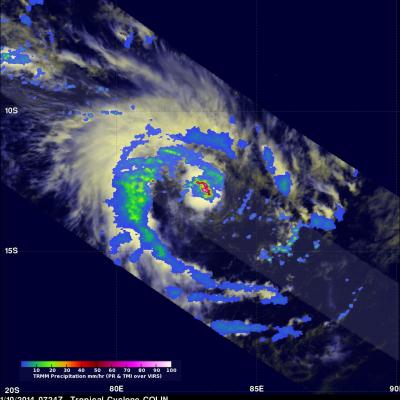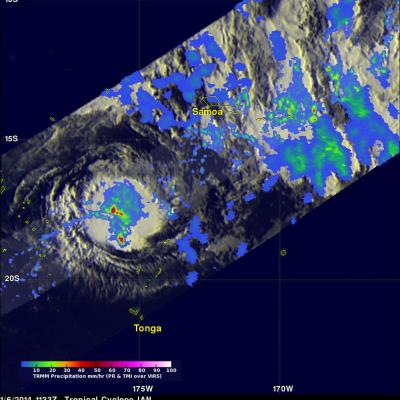Tropical Cyclone Fobane
Tropical cyclone Fobane was located southeast of Reunion Island in the southwest Indian Ocean when the TRMM satellite passed over on February 11, 2014 at 0035 UTC. Fobane was very small but contained a few powerful convective thunderstorms near the tropical cyclone's center of circulation. TRMM's Precipitation Radar (PR) measured rain falling at a rate of over 68mm/hr (~2.7 inches) in these storms. The image above shows a simulated 3-D view using data from TRMM's Precipitation Radar (PR) instrument. Those data found a few of the powerful storms near Fobane's center were reaching heights of


